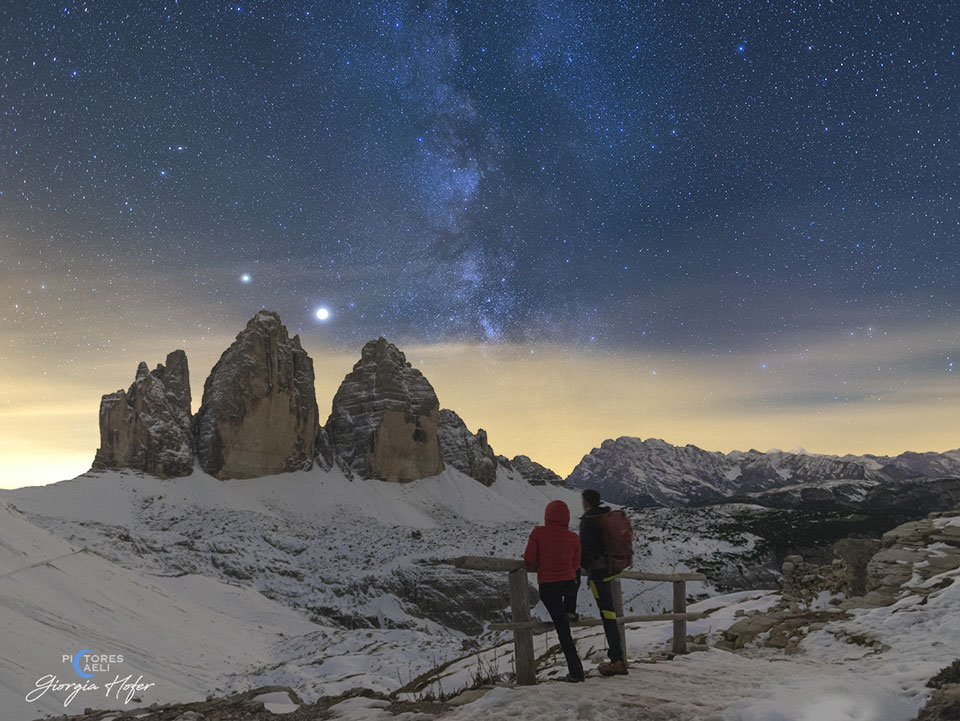Dear Friends:
2020 has been a challenging year, but it has been filled with space news and night sky excitement. I will try to catch you up in a later post on the space mission news (e.g., China’s moon rock collection mission, NASA’s Osiris-REx asteroid landing and sample collection, SpaceX sending 4 astronauts to the ISS, many new gravitational wave discoveries [see my earlier video], and more), More immediately, I want to call your attention to three amazing sky events happening now and in the coming weeks:
- Jupiter and Saturn spectacular — all month long: If you’ve been out stargazing shortly after sunset, you’ve probably already noticed Jupiter and Saturn, though you might not have realized it. Both are shining brightly in the western sky after sunset, with Jupiter the brighter of the two. Moreover, their current orbital positions are putting them unusually close together in our sky (making what astronomers call a “conjunction”). In fact, on the night of December 21, they will appear closer together — separated by an angle only 1/5 as wide as the full moon — than they have in nearly 400 years (since 1623)! I strongly encourage everyone to go out and see them night after night.
- This Earthsky article has details on the conjunction.
- You can use the TimeandDate.com Night simulator to see exactly where and when you can see them in your local night sky.
- For a taste of what to expect, see this beautiful photo featured on the APOD web site.
- Geminid Meteor Shower — peaking Dec. 13/14: Meteor showers are always fun to watch, and this year’s Geminids should be a good one because they are happening at new moon, when the sky is darker. To learn how to watch, please read my “Comet and Meteor Shower Q&A” that you’ll find if you scroll down through my August post.
- You can also find details about this particular meteor shower at this Earthsky page.
- Total Solar Eclipse in Chile, Argentina — Dec. 14: Before Covid changed our lives and plans, a fair number of you had planned to be joining me and many others to see this incredible event. But you can still learn about it — and tell your South American friends not to miss it. Full details are in my free Totality app, along with information that will help you learn about eclipses and prepare for others, including the next USA total solar eclipse in 2024.
NEW Middle/High School Climate Curriculum — Teaching “with inspiration, not fear”
You can use the direct link bigkidscience.com/climatechange to reach our newly posted chapter on climate change for my Earth/space science curriculum. Though the overall project is aimed at middle school, this particular chapter should also be of interest to high school and college teachers, and perhaps even to the general public. Please check it out and let me know what you think, especially about the approach of teaching the topic “with inspiration, not fear.” Note: for general information about the project, please see its About page.
As always, feel free to share this email with others and to reply to me directly with any questions or comments.
Best,
Jeff

